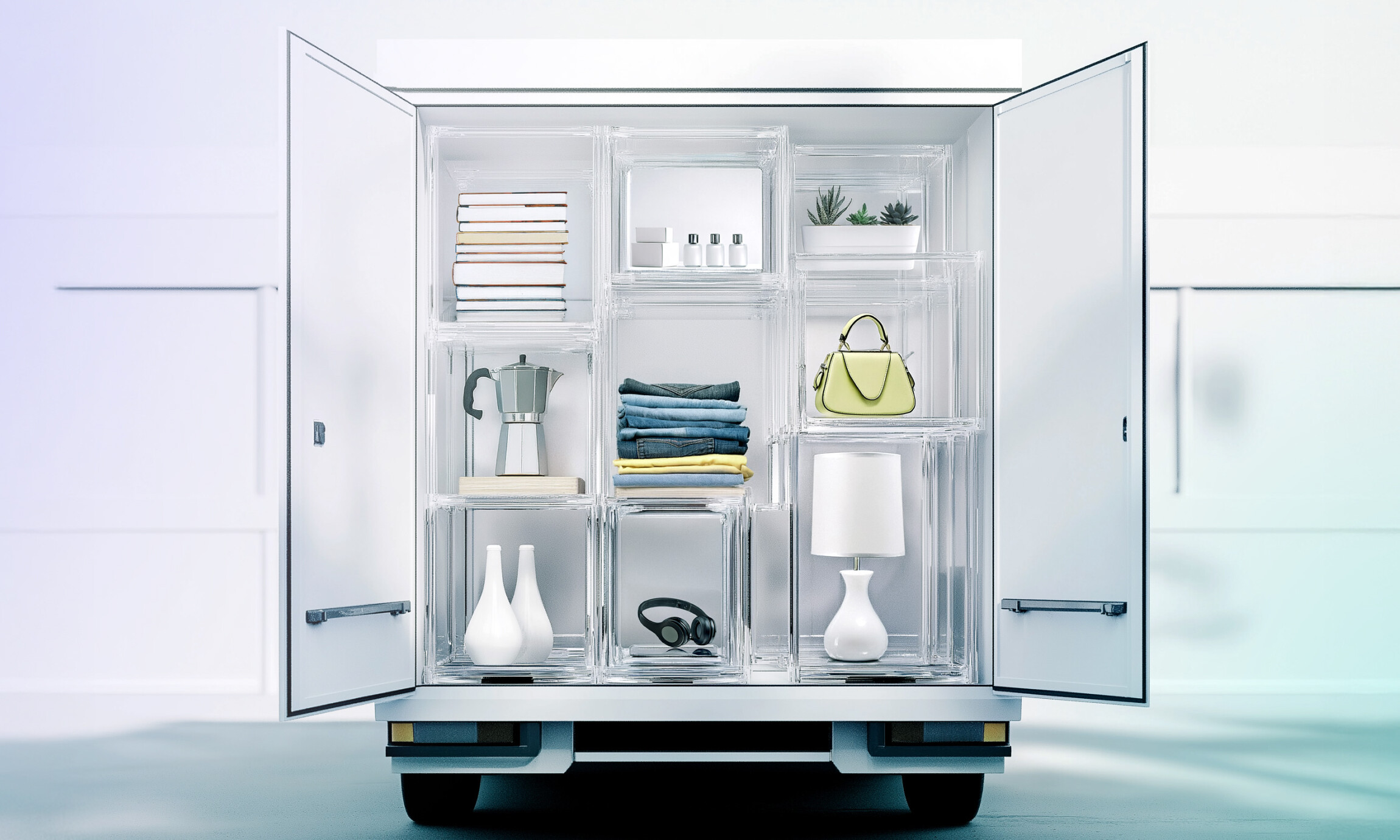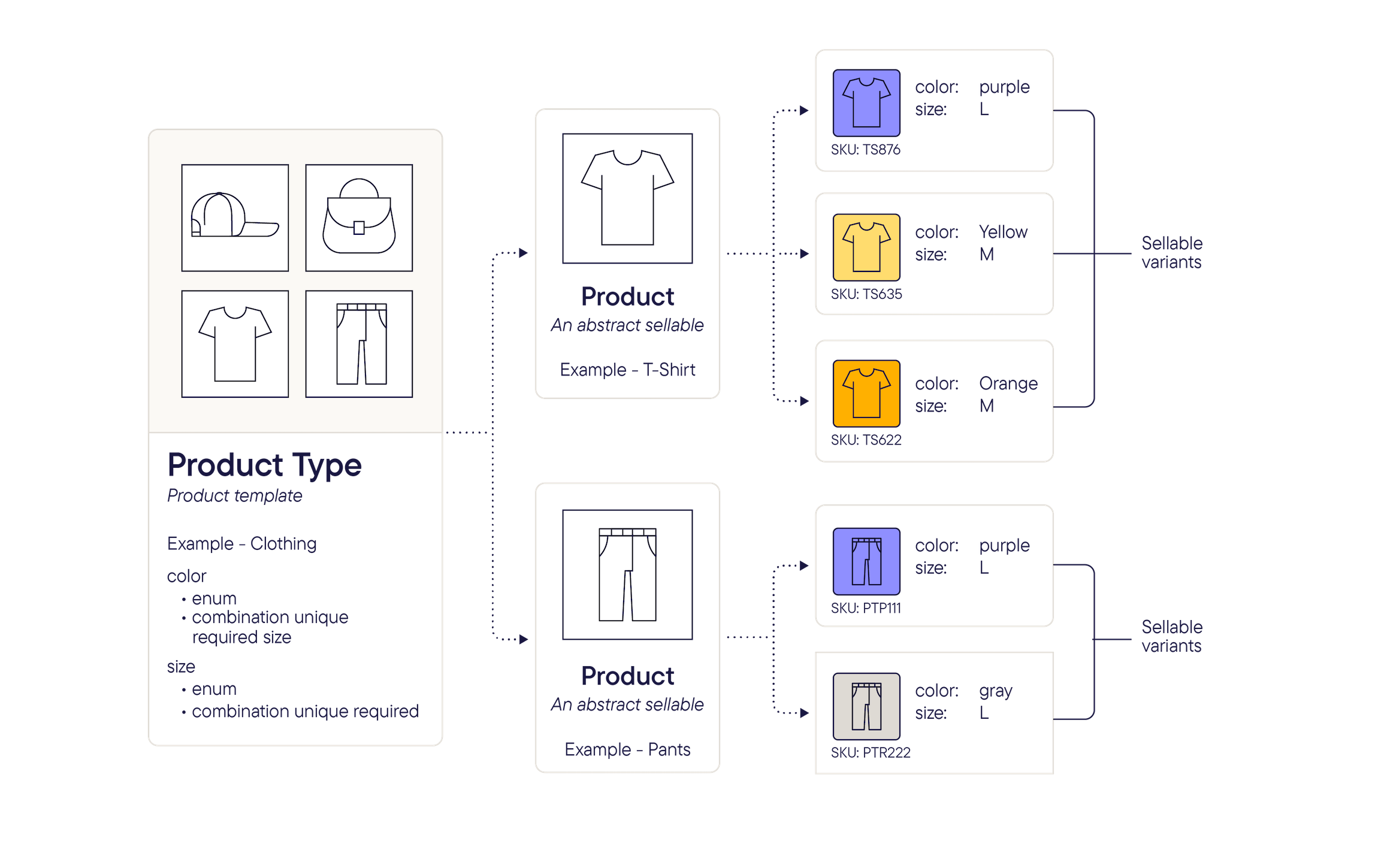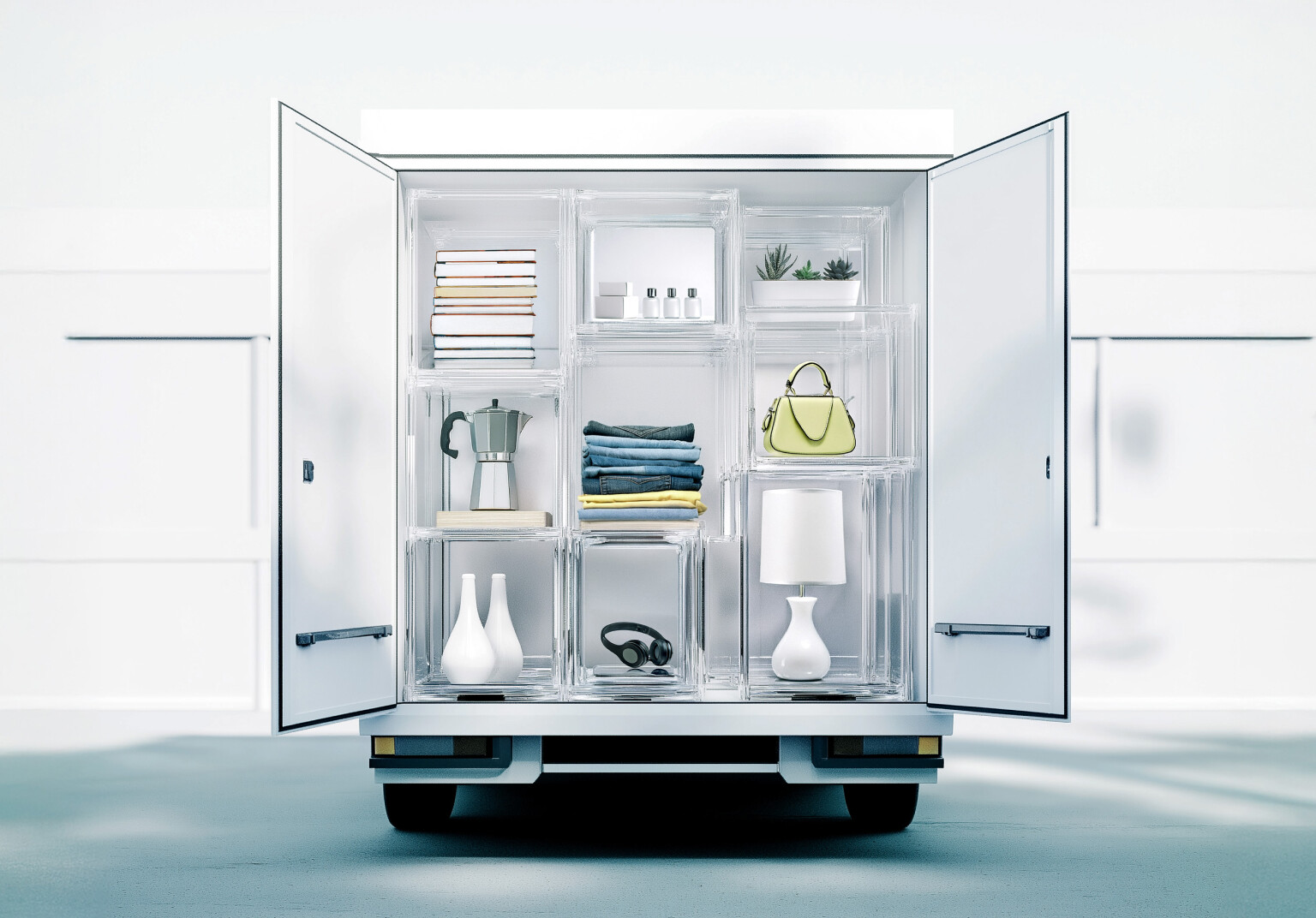
Why is composability essential for a modern tech stack? And what are the key steps to successfully transition from a legacy (or monolithic) system to a composable (and microservices-based) model? Learn key best practices and the migration steps to modernize your commerce tech stack to create unique customer experiences, reduce costs and accelerate time-to-value.

Today’s B2C brands face ever-evolving consumer expectations due to market conditions changing all the time. This means the pressure to provide best-in-class and unified experiences is here to stay. However, many brands and retailers still rely on outdated monolithic systems for eCommerce, which are difficult to customize and update, as well as costly and inefficient. If your current tech ecosystem is unable to support your business objectives of today and tomorrow, it’s time to consider migrating to composable commerce.
As a flexible, scalable and agile architecture, combined with a best-of-breed approach, composable commerce allows companies to choose the components they need to build and run outstanding shopping experiences. While commercetools B2C Commerce provides brands and retailers with customizable commerce components like cart, order, product catalog and promotions, you can further tailor your tech stack with best-of-breed vendors for CMS systems, search, shipping services and more.
How to migrate to composable commerce
There are two main methods of migrating to a composable commerce platform: the phased approach (strangler pattern) and the big bang approach.
The phased approach allows you to gradually replace monolithic functions with individual components, minimizing risk and disruption. In contrast, the big bang approach involves building the new system from scratch and switching over all at once, which can be beneficial for platforms that are difficult to break down.
So, what’s the best approach for your business? It’s entirely up to you. Consider how easily your current system can be broken down into smaller components, how experienced your team is with microservices, and whether it makes sense to create a proof-of-concept (POC) and pilot it with a subset of your buying journey. Answering these questions will help you define what’s the migration process that fits the needs of your business.
8 migration steps to migrate to composable commerce
While there is no set-in-stone process across all existing applications — third-party or homegrown — to commercetools, we provide a guideline to help you organize and streamline the cadence of your project. Let’s explore how to plan a monolith to microservices migration with commercetools B2C Commerce.
The ideal starting point for your migration is to assess the state of your current digital ecosystem, including the frontend user experience, backend functionality and third-party systems.
While there are many technical steps, take the opportunity to begin your discovery phase from a business perspective. For instance, what are the areas causing issues, frustrating customers or holding your business back? This analysis will be invaluable to help eliminate overhead and design a solution that fits the unique needs of your business.
Audit and eliminate feature bloat. Create a list of all processes, features and use cases. Then, determine which features are unused (or underused) and can be removed from the solution altogether.
Gap assessment. Determine gaps and determine what’s 100% critical and/or urgent.
Prioritize. Set priorities and edge cases and decide what can be migrated immediately and what can wait — or be dropped.
Compare features. Hold your prioritized list against the features provided by commercetools. Identify the items where you can achieve your “ideal” state with the components we offer as standard. What’s left are your “gaps,” so you’ll need to decide how to address each individually.
Define your migration method and starting point. Based on your analysis, determine the best route for your team to start a replatforming project and how this will be accomplished (via the big bang approach or strangler pattern).
Start your commercetools Composable Commerce project with sample data, so you can familiarize yourself with commercetools using realistic commerce examples. Explore the B2C Sample Data on the Merchant Center or set up your first API Client. You can utilize our 60-day free trial with full access to our B2C Retail sample data to dive deeper into our capabilities. Once you start adding or importing new data — or changing your Project configuration — you can delete your sample data.
After envisioning your desired business state, the next step is to create a strategic roadmap to achieve it. Apply an incremental innovation strategy, making gradual, iterative improvements to enhance efficiency and functionality and resolve business challenges.
These are the three top areas as a baseline for your roadmap (not necessarily in this order):
Data migration and modeling: This step is an opportunity to reassess and redesign your business setup, discarding what doesn’t add value and creating a flexible environment that supports your goals now and in the future. After considering the specific circumstances and business goals, start planning the migration of your critical data from other systems to commercetools Platform. Best-of-breed ecosystem: Include all the custom extensions that need to be built or integrated via third-party services.
Frontend migration: commercetools Composable Commerce is a headless backend solution, so you can connect the frontend(s) of your choice and build customized customer experiences. Migrating to commercetools Frontend is an excellent opportunity not only to give your storefront a fresher look but also to handle some of the business logic you intended to migrate from your current system.
Regardless of whether your migration starts with your product catalog/PIM, checkout or an alternative route, migrating your data comes first. Follow these four steps:
Identify the data you intend to migrate. Primary data types include product order and customer data. It may also encompass category taxonomy, graphical and multimedia, as well as marketing content that flesh out the customer experience.
Clean up your data prior to loading it into a new system. Make sure that the data you don’t need is discarded.
Ensure structure compatibility. The data structure should be tailored to eCommerce utility and according to our Product Modeling Guide. We suggest prioritizing essential attributes, especially those crucial for search functionalities or specific features.
Export/import. Export product data from your monolithic platform and import it into commercetools leveraging our data integration tools and APIs. You can use tools such as the Import API and the Java Sync Library.
commercetools is based on a schemaless database logic, allowing for real-time updates to its structure, so you can change the data model in real-time using the Merchant Center or directly on the API level. When beginning a project, consider which aspects of your products will map to Product Types, Products, Product Attributes and Product Variants. How you choose to define your products has an effect on store performance, load time, ease of product management, etc.

commercetools Composable Commerce provides out-of-the-box data structures and behavior that cover the needs of modern commerce solutions. However, your project may have unique requirements that require these data structures and behaviors to be extended.
This is where extensibility comes in. This design approach enables platforms to continuously expand from their out-of-the-box features beyond their initial uses and configurations. In short, it’s possible to use an existing functionality as the foundation and build on top of that, so businesses can meet business needs more easily and quickly.
At commercetools, extensibility enables your developers to modify, add and extend 500+ APIs to behave according to your business’ specifications, from adding fields to existing resources to implementing new workflows. These customization options available at commercetools are Types, Custom Fields, Custom Objects, API Extensions, Subscriptions and States.
Merchant Center functionality extensions
While our composable commerce offers a robust selection of tools, you may want to extend and/or customize some of its functionality. You can alter your Merchant Center to create whole new screens, connections to external systems and extended views atop existing admin screens. When customizing the Merchant Center, marketers and business users can alter workflows, modify editors, embed integrations/customizations and more to run commerce experiences smoothly.
After migrating the data and your first applications to a composable architecture, you can start completing your best-of-breed ecosystem. In a composable environment, you’re not locked in with any particular vendor, so you can choose what services best match your needs.
As part of Step 1 in this guide, you have already defined and prioritized all custom extensions you need to build or buy to create a cohesive commerce infrastructure. This may include (but is not limited to) an ERP system, order management, sales tax, payments, personalization, CMS, content delivery network (CDN), search and merchandising.
Remember: With a microservices-based and API-first approach, you can integrate the components you need, whether they’re built in-house, sourced from best-of-breed vendors or a mix of both.
Integrating the user experience layer (frontend) is generally the most time-consuming part of the migration. Since you’re moving toward a composable architecture, a frontend solution decoupled from monolithic stacks is the logical next step.
It’s up to you whether you create your own digital storefront, utilize a frontend/CMS partner with productized integrations to commercetools (check our Solution Hub for more information) or leverage commercetools Frontend.
💡 Check our documentation for more information on getting started with commercetools Frontend and plan the migration of your frontend.
For brands and retailers with a brick-and-mortar presence that envision seamless integration across physical and digital channels, unifying commerce harmonizes all commerce operations and data into one platform, so your business can run B2B, B2C and D2C models on one backend, leveraging data across all channels.
commercetools InStore is a solution that extends your existing commercetools implementation into physical stores (brick-and-mortar, pop-up shops, showrooms and customer service desks). Extending your project with commercetools InStore enables your business to take advantage of the benefits of unified commerce by leveraging a common backend platform and data set as a single source of truth, including leveraging your existing POS equipment.
💡 Get all the details about commercetools InStore, as well as how to test and implement it, in our documentation.
To avoid system crashes or data loss, prevent errors or corruption of data, and refine overall system performance and reduce downtime, ensure that testing is part of your migration process. Develop a testing plan and use tools such as load testing software, performance monitoring, etc., to make sure everything works without issues.
Once each component is deployed, keep track of performance metrics such as page load time, server response time and transaction processing time, so you can identify areas that could be optimized. Real-time monitoring tools will help you identify issues like system crashes or slow page load times. In addition, analyze data like customer behavior, product performance and sales data to identify trends and patterns that could be used to optimize performance.
It’s time to migrate to commercetools
The migration process with a composable stack opens up multiple opportunities to consolidate and streamline your commerce operations with a solution that’s versatile, flexible and scalable. Along with the freedom to experiment, you have the foundation to innovate continually and grow your business, such as:
The leading mattress company Purple replatformed from Shopify to commercetools to power its growth with a flexible platform that enables custom bundling and promotional features.
The retailer specializing in electronic components Jaycar embraced unified commerce with commercetools B2C Commerce and commercetools InStore, providing consistent and tailored shopping experiences for online and in-store customers on a single platform.
Australian fashion house APG & Co. reduced technology operating costs by 35% and technical support time by 60% after moving away from Salesforce and adopting composable commerce.
The D2C retailer specializing in high-quality meats and seafood Wild Fork Foods migrated from Shopify to leverage the benefits of extensibility to handle variable-weight products. On its launch day in Canada, the company saw an increase in daily orders by 58% and a 73% increase in daily new customers.
If migrating to composable commerce with commercetools is the right approach for your business, you’re on the right track to future-proof your commerce architecture — and never have to replatform again!
